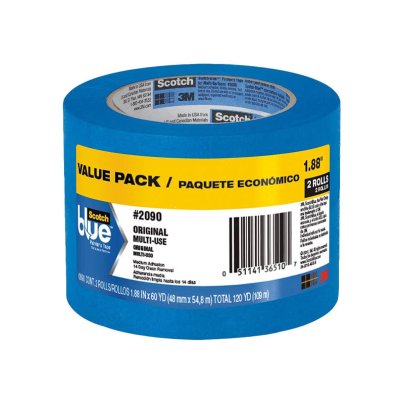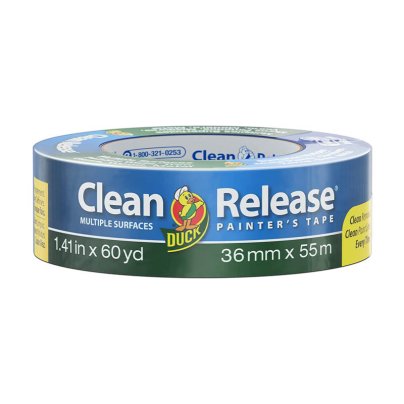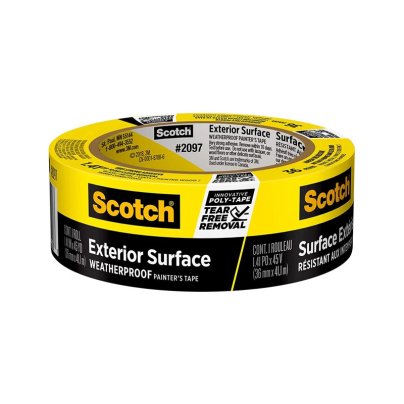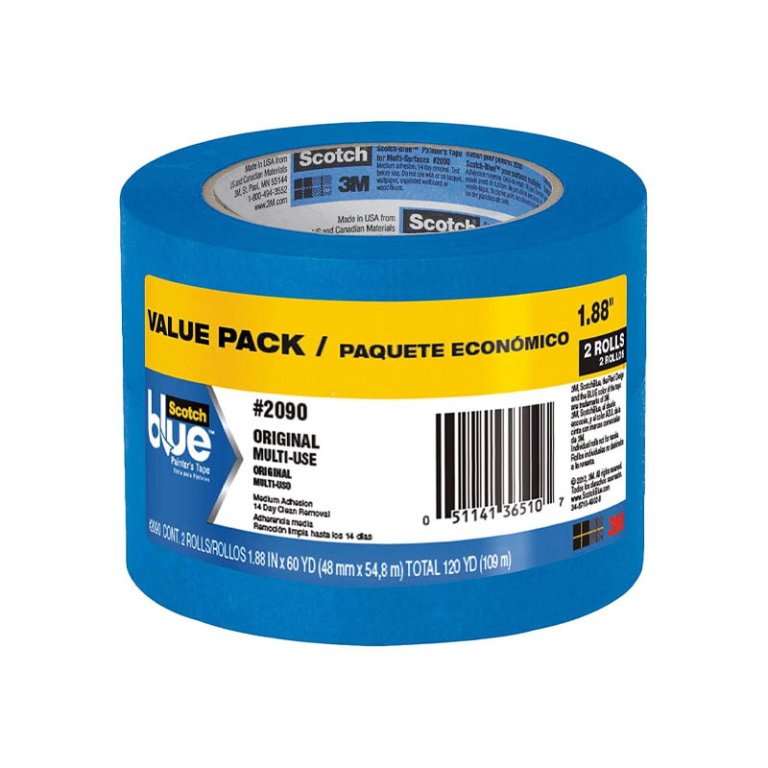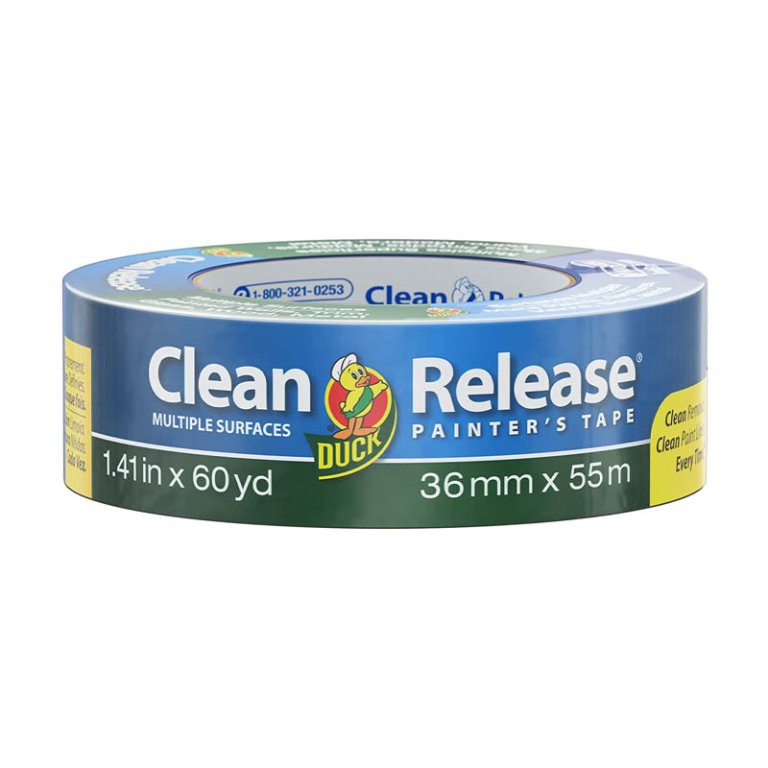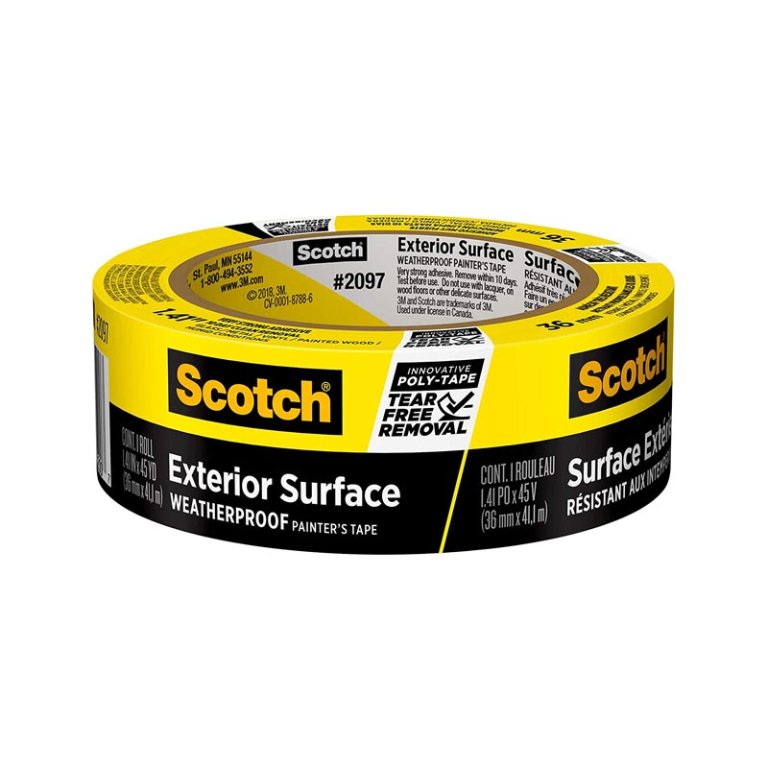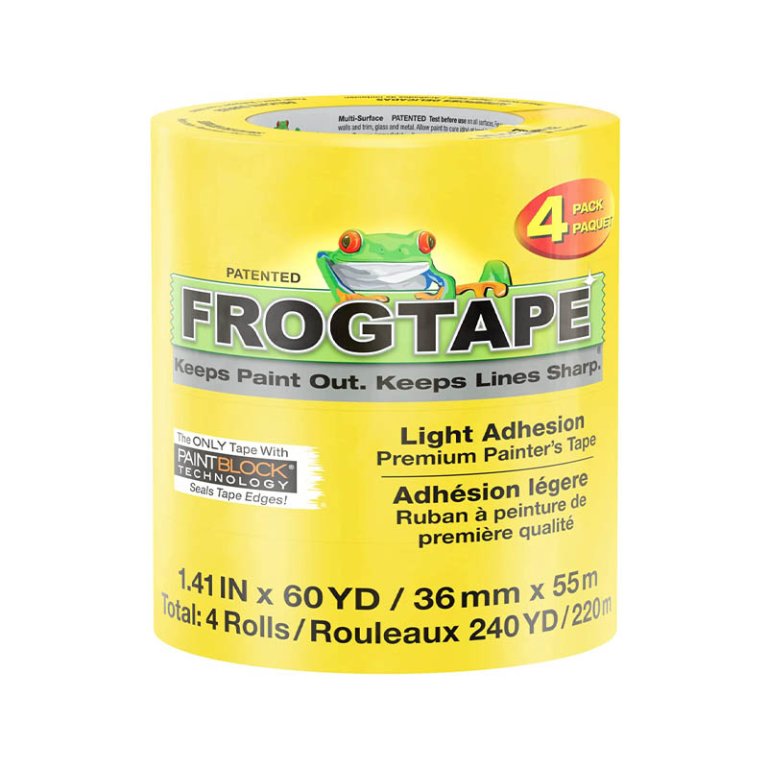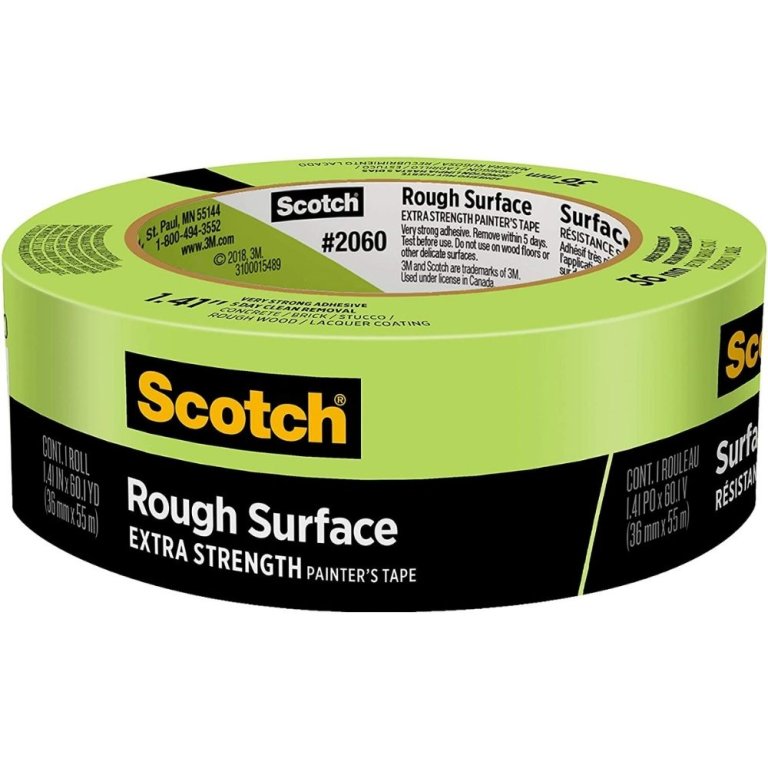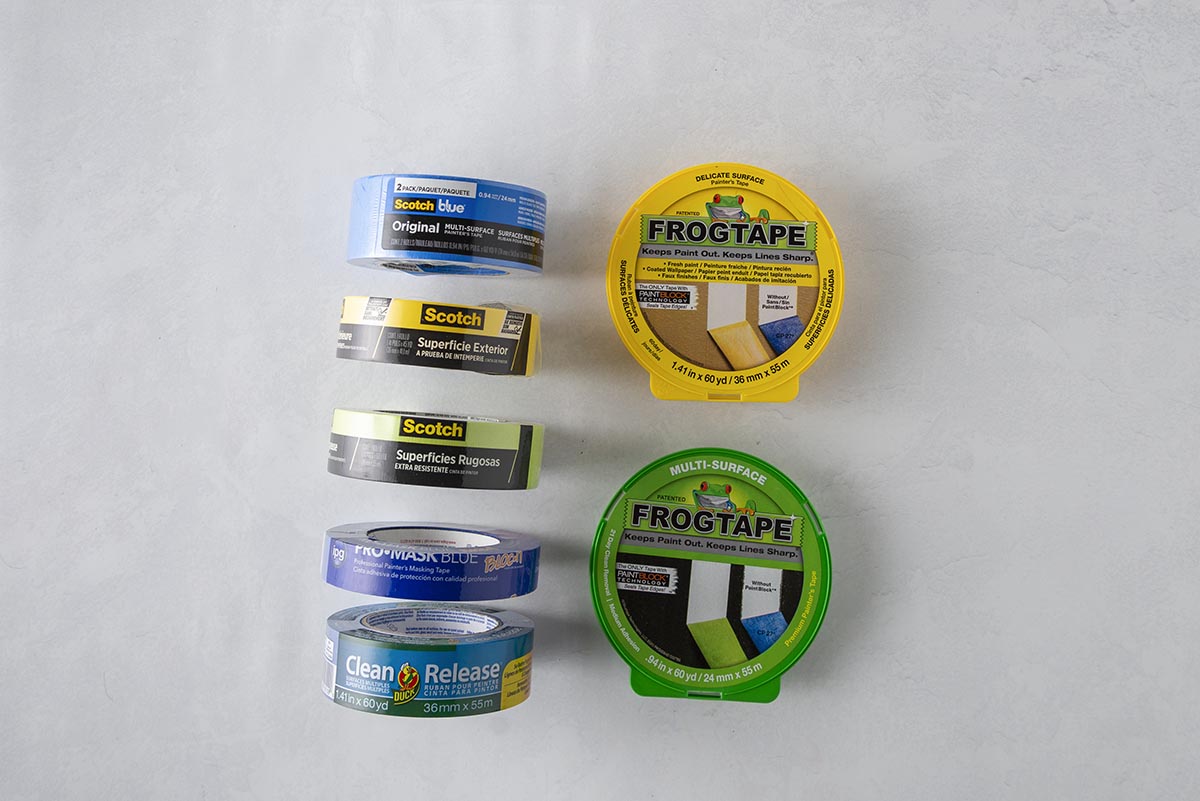
We may earn revenue from the products available on this page and participate in affiliate programs. Learn More ›
For a pro-quality paint job, you’ve got to focus on the areas you don’t want to paint as well as the ones you do. That’s where painter’s tape comes in. A specialty masking tape designed for easy removal, painter’s tape is typically applied where two surfaces meet—for instance, where a wall meets crown molding. Once in place, the tape prevents paint from bleeding over into other areas, creating a crisp, even, and aesthetically pleasing border edge.
Painter’s tape lets you work quickly and with confidence, with fewer mistakes to correct. Not all painter’s tapes are of the same quality or suit all situations, however, so we put a host of them through hands-on testing to see how they performed in terms of application, bleed-through, and removal. To choose the best painter’s tape for your project, weigh the considerations detailed below and read reviews of our top picks.
- BEST OVERALL: ScotchBlue Original Multi-Surface Painter’s Tape
- BEST BANG FOR THE BUCK: Duck Brand 240194 Clean Release Painter’s Tape
- BEST FOR OUTDOORS: Scotch Exterior Surface Painter’s Tape
- BEST FOR WOODWORK: IPG ProMask Blue with BLOC-It Masking Tape
- BEST FOR DELICATE SURFACES: FROGTAPE Delicate Surface Painter’s Tape
- BEST FOR TEXTURED WALLS: Scotch Rough Surface Painter’s Tape
- BEST MULTISURFACE: FROGTAPE 1358463 Multi-Surface Painter’s Tape
How We Tested the Best Painter’s Tape
We tested each painter’s tape for its adhesive quality on recommended surfaces, ease of use, and quality of bleed lines. We applied each tape to the surfaces it was designed for and noted how well the tape came off the roll and adhered to its intended surface. After applying paint and letting it dry, we carefully removed the tape and inspected the surface for bleed lines and damage.
Our Top Picks
Whether you’re repainting the living room or working with exterior walls, make sure you have all the right supplies on hand, including one (or more) of the best paint brushes available, great roller brushes, drop cloths, and painter’s tape. Consider these painter’s tapes for your next project. All are among the best available for various painting tasks.
Best Overall
ScotchBlue Original Multi-Surface Painter’s Tape
What We Like
- Multipacks perfect for large projects
- Width is good for trim and wall
- Easy to tear off the roll, stick to the wall, and remove
What We Don’t Like
- Some feathered edges and some bleeding
- Some peeling on delicate surfaces
Product Specs
- Use: Indoor and Outdoor
- Width: 1.88″
- Adhesion level: Medium
This Bob Vila Approved product carries our brand’s highest level of recommendation.

Bob Vila Approved recognizes the household and DIY products that impressed us most in our real-world testing and that exemplify core values of the Bob Vila brand, including craftsmanship, innovation, and value for the dollar. Winners of this designation come recommended by our professional review team and are personally approved by Bob Vila.
UV-resistant, medium-adhesion ScotchBlue multisurface painter’s tape is designed to peel off cleanly, leaving no surface damage. While it comes in a range of widths from 0.7 to 2.82 inches, the 1.88-inch is suitable for a range of surfaces, both flat and curved, including wood, glass, and painted or textured walls and ceilings.
ScotchBlue’s original painter’s tape is a solid all-around tape that will work well for most painting tasks. We found that it’s easy to tear, apply, and remove from surfaces. Though we noticed some feathering and slight bleed-through with heavy paint application, this wasn’t a deal-breaker. However, the adhesive is a bit too strong for delicate surfaces such as wallpaper and textured ceilings.
Best Bang for the Buck
Duck Brand 240194 Clean Release Painter’s Tape
What We Like
- Easy to tear, apply, and remove
- Economical price
- UV resistant for outdoor use
What We Don’t Like
- Adhesion not consistent across all surfaces
Product Specs
- Use: Indoor and outdoor
- Width: 1.88″
- Adhesion level: Medium
To save some cash on an upcoming paint project, consider this medium-adhesive all-purpose painter’s tape. In our tests, we found it to work almost as well as our Best Overall pick at half the price. Duck Brand’s Clean Release Painter’s Tape is an economical 7 cents per yard, while ScotchBlue Original Painter’s Tape runs about 14 cents per yard.
Duck Brand’s Clean Release Painter’s Tape is UV resistant, so it is a solid choice for outdoor as well as indoor use. It adheres easily to recommended surfaces, sticks for up to 14 days, and comes off without residue. Adhesion quality wasn’t as consistent as with our Best Overall choice, and there was a bit more bleed-through, but we still consider it a quality product for the price.
Best for Outdoors
Scotch Exterior Surface Painter’s Tape
What We Like
- Easy to handle
- Produces clean edges
- May be cleanly removed from outdoor surfaces for up to 10 days
What We Don’t Like
- Hard to remove from windows
Product Specs
- Use: Outdoors
- Width: 1.41″
- Adhesion level: High
For a variety of exterior surfaces, this ScotchBlue exterior surface painter’s tape is a worthy option. It has a waterproof backing and can withstand sun, wind, and rain. Its 1.41-inch width is highly versatile, but there’s a 1.88-inch version, too, for extra wiggle room.
In our tests, ScotchBlue exterior surface painter’s tape was easy to tear off the roll and apply. It adhered quite well to exterior surfaces such as metal, vinyl, painted wood, and glass but didn’t perform well on brick or other rough surfaces. Removal was not problematic except for some trouble removing it from windows. While the manufacturer claims clean removal within 10 days, we recommend removing the tape within 7 days for best results. Do not use it on delicate surfaces, as the adhesive can lift decorative finishes and wallpaper.
Best for Woodwork
IPG ProMask Blue with BLOC-It Masking Tape
What We Like
- Width suits most applications
- Will stay on outdoor surfaces up to 14 days
- Can be used on unfinished wood, wallboard, and lacquer-coated surfaces
What We Don’t Like
- Too sticky for use on delicate surfaces
- Use: All purpose
- Width: 0.94″
- Adhesion level: High
Product Specs
Using proprietary technology, this painter’s tape from IPG has specially designed edges that prevent paint bleeding and seepage, especially when applied to wooden, lacquered, and laminated surfaces. It produced clean edges without feathering or bleed-through in our tests and caused no damage upon removal from recommended surfaces. (Due to its high adhesive level, we don’t recommend it for delicate surfaces.)
ProMask Blue is UV resistant, so it is a good choice for outdoor as well as indoor woodwork. Its slightly narrower width (0.94 inches) makes it ideal for corner and detail painting. This tape should be removed within 14 days for best results.
Best for Delicate Surfaces
FROGTAPE Delicate Surface Painter’s Tape
What We Like
- Easy to tear, stick, and remove
- Stays in place for 60 days
- Produces clean, sharp lines on delicate surfaces
- Includes a storage container
What We Don’t Like
- Not for use on unfinished surfaces
Product Specs
- Use: Indoor
- Width: 1.41″
- Adhesion level: Low
To tape wallpaper, finished wood, and fresh paint (as long as it’s dry to the touch), consider relying on FROGTAPE. This low-adhesive tape is embedded with absorbent polymers that react with latex paints, forming a gel barrier that stops paint from bleeding. The tape can stay in place for up to 60 days and is best for interior use.
In testing, we found this tape easy to tear and apply to painted walls and trim, as well as wallpaper, but it did not adhere well to unfinished or unprimed surfaces. It’s easy to remove, creating crisp, clean lines, and in our wallpaper test, it left the wallpaper intact and did not lift any paint away from the painted trim. It’s especially useful for trim, windows, and detail work.
Best for Textured Walls
Scotch Rough Surface Painter’s Tape
What We Like
- Easy to use
- Reliable adhesive for textured surfaces
- Produces clean lines with minimal bleeding
What We Don’t Like
- Cannot be used on painted drywall, plaster walls, and wood trim
Product Specs
- Use: Indoor and outdoor
- Width: 1.41″
- Adhesion level: Very high
This rough-surface painter’s tape was developed to bond strongly to concrete, brick, stucco, rough wood, and other bumpy areas. Despite its aggressive adhesive, it unwinds smoothly for ease of use. The tape can stay on for 5 days and will leave no sticky residue when removed.
We tried this painter’s tape on a brick exterior surface and found it easy to tear and apply. Once the paint dried, the tape came off smoothly and left only minimal bleeding; however, this high-adhesive tape will remove paint from painted drywall and wood trim. We tested the 1.41-inch width, but other widths are available.
Best Multisurface
FROGTAPE 1358463 Multi-Surface Painter’s Tape
What We Like
- Adheres to a variety of surfaces
- Can remain on surfaces for 21 days
- Storage container included
What We Don’t Like
- Can be hard to manipulate
Product Specs
- Use: Indoor and outdoor
- Width: 0.94″
- Adhesion level: Medium
Those stymied to find an all-around painter’s tape that works well on a variety of surfaces, indoors and out, may want to try FROGTAPE’s Multi-Surface Painter’s Tape with PAINTBLOCK. The medium-adhesion tape boasts a super-absorbent polymer that reacts with the water in latex paint to form a gel that creates a micro-barrier, sealing the edges of the tape to prevent bleed-through.
While the thick, sticky tape proved a bit tricky to manipulate, once off the roll it was easy to apply and worked well, notably on rougher surfaces, including carpet. It removed easily from rugged surfaces and left behind mostly crisp edges, but we found it to be a bit too sticky for delicate surfaces.
Our Verdict
As a medium-level multipurpose tape, ScotchBlue Original is a top choice that works for most indoor and outdoor painting jobs. Different applications may call for greater or lesser adhesion, and so we found FROGTAPE Delicate Surface tape is better for finished wood, fresh paint, wallpaper, and other less durable surfaces. For effective use with textured surfaces like concrete and bricks, Scotch Rough Surface tape has just the right adhesive strength.
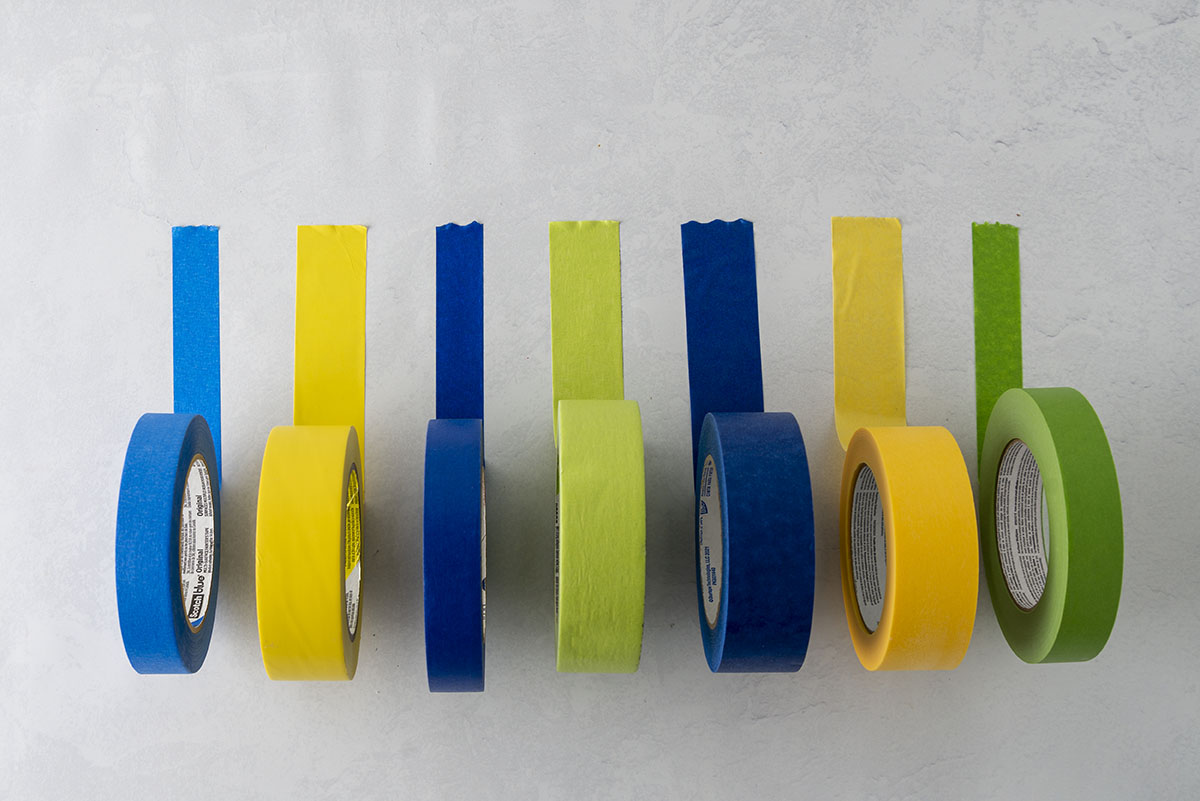
What to Consider When Choosing the Best Painter’s Tape
Various aspects of a painting project, including indoor versus outdoor use, surface type, and the length of time the tape must stay in place determine which painter’s tape will be most suitable. Keep the following features in mind and the projects you plan on using painter’s tape for.
Longevity
The length of time a painting project takes to complete and fully cure may affect the type of tape you use. Check the packaging or online product information to determine how long the adhesive backing will stay fresh and lift off easily without damaging the surface or splintering into pieces. This is largely determined by the adhesive strength of the tape. Label info will give you duration estimates as well as any environmental factors that may affect tape effectiveness.
- Waterproof and exterior tapes have the strongest adhesives of painter’s tape and should be removed within 7 days to prevent surface damage.
- A medium-adhesive, multipurpose tape should remove easily up to 14 days after it’s applied, even if exposed to direct sunlight.
- For delicate surfaces and detail jobs, low-adhesive painter’s tape can last up to 60 days, depending on the brand and degree of sun, heat, and humidity exposure.
Adhesion Strength
Painter’s tape has different degrees of stickiness and may be safely left in place for different periods of time. The guidelines below will help you choose the right adhesion strength.
- Low: A low-adhesion tape is best for delicate surfaces (and may be labeled as such), including faux finishes, wallpaper, and decorative or patterned paint jobs. These tapes can remain in place for 1 week to 2 months, depending on the brand.
- Medium: A medium-adhesive, multipurpose tape suits most common indoor surfaces, such as drywall and plaster. It’s also a good choice for easily scratched surfaces, including painted and unpainted wood, metal, glass, and stone. These tapes can typically stay in place for up to 2 weeks.
- Heavy-duty: A heavy-duty adhesive (sometimes labeled “for exteriors”) is best for outdoor work as well as for securing heavy drop cloths and protecting such stick-resistant surfaces as concrete, brick, stucco, and lacquered paints. Weather-resistant tapes should be removed within 7 days.
- Special purpose: If your room has laminate or wood floors (unfinished, or coated in polyurethane or lacquer), protect the floors with rosin paper and tape specially designed for these materials.
Tape Width
To tape off windows, trim, and molding when painting walls, the most popular widths for the job are 1.41 and 1.88 inches. These widths create a perfect edge without covering too much of the surface that will be painted—or too little of the trim to be protected. For corner areas and detail/pattern work, a slightly narrower width of 0.94 inches is preferred because it fits more easily into tight spaces.
When using a small paint brush for detail work, a narrower tape is also more versatile, as it covers less surface area, making it easier to create stripes and other geometric patterns. Extra-wide painter’s tape (from 2 to 3 inches) is useful for taping floors and ceilings. A wider tape will catch more accidental splatters, as well as protect floors and ceilings from contact with the brush or roller.
Color
White, green, and blue are the standard color options for painter’s tape. Manufacturers tend to associate these shades with certain features, like adhesion strength. This isn’t always the case, so it’s important to check product specifications before buying rather than rely on color. Painter’s tape comes in a variety of other colors, though they’re less common.
- White painter’s tape is sometimes referred to as masking tape. This tape is usually general purpose and cheaper than other types. White may be suitable for extensive projects if you’re on a budget—the cost of painter’s tape can quickly add up with larger surfaces.
- Green painter’s tape has a strong adhesive suitable for rough, textured, and uneven surfaces. With its high adhesion strength, green painter’s tape may damage certain surfaces like delicate drywall and flooring.
- Blue painter’s tape is popular for indoor and outdoor uses because it is UV resistant—important if your paint job will be exposed to sunlight. Ultraviolet rays can melt some adhesives, making the tape more difficult to remove. Follow instructions for use and this won’t happen with blue painter’s tape.
FAQs
Painter’s tape is used mostly to protect adjoining surfaces from being painted. It’s particularly useful for keeping window trim, windows, and baseboards free of paint being applied to walls.
Green painter’s tape typically contains a high adhesive strength suitable for rough, textured, and uneven surfaces. Blue painter’s tape is available for indoor, outdoor, or all-purpose use.
Companies that make painter’s tape often suggest removing the tape between coats. However, if the tape is still holding well and you paint your second coat in a day or so, it is easier and more economical to leave it on. In general, timing when to remove tape means not rushing removal but not leaving it on too long, either.
Paint can bleed through if you use a tape that doesn’t work well on a particular surface. For example, use tape made for rough surfaces when protecting bricks or concrete. Position the tape precisely, using about 10 inches off the roll at a time. Stretching the tape too much can make it pull away or create air bubbles that invite paint in.
